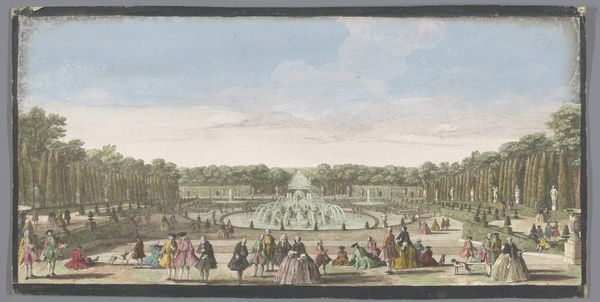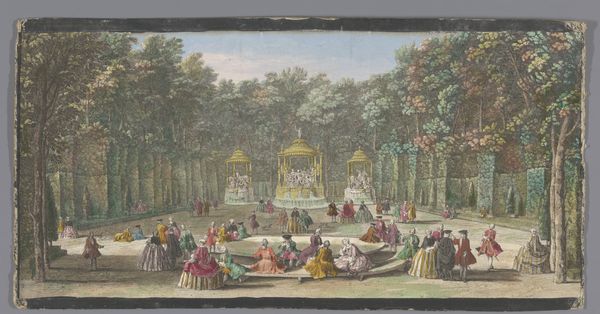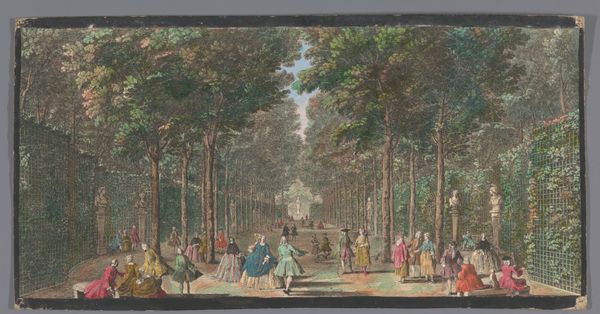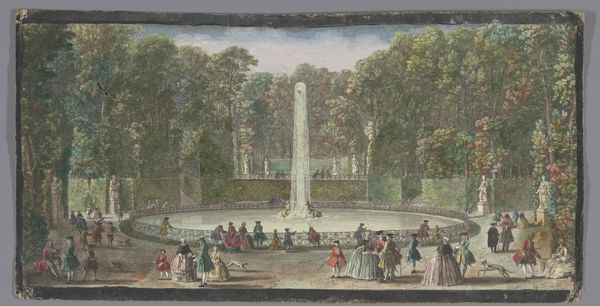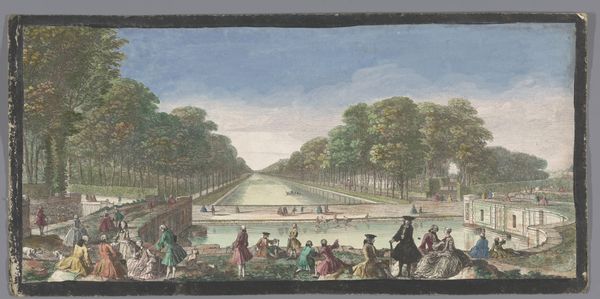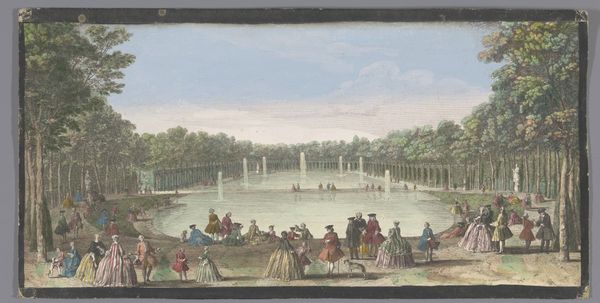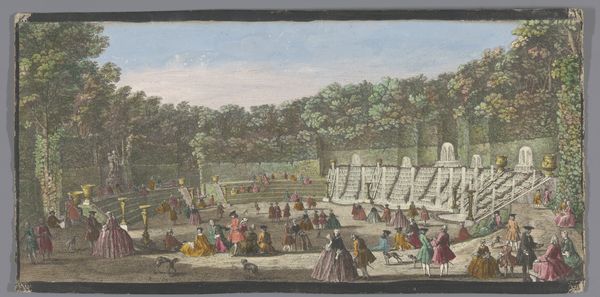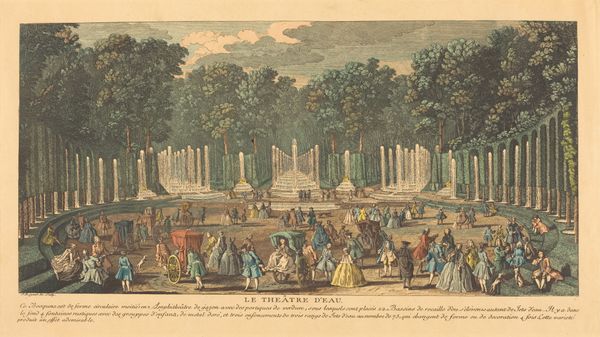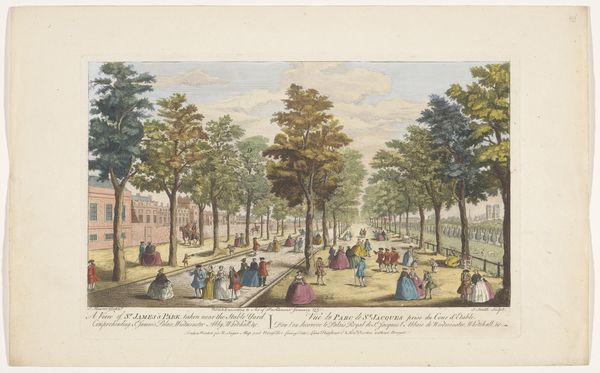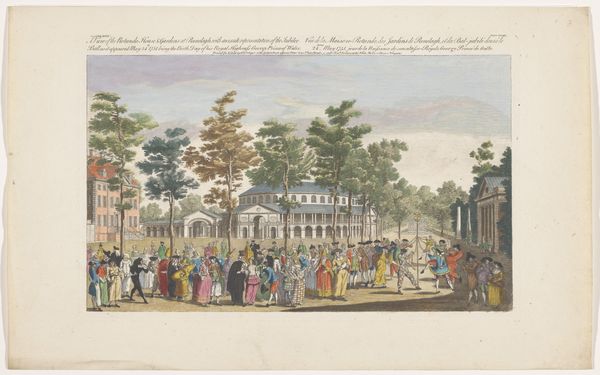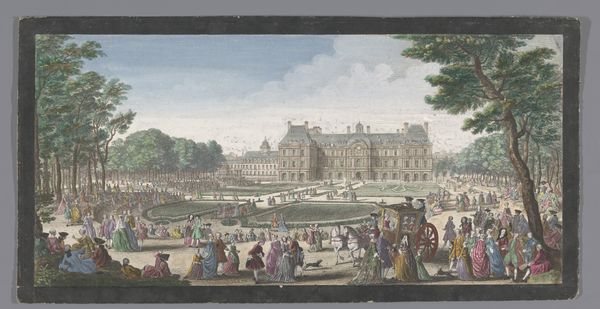
Gezicht op het Bosquet du Théâtre d'Eau in de Tuin van Versailles 18th century
0:00
0:00
anonymous
Rijksmuseum
tempera, watercolor
#
tempera
#
landscape
#
watercolor
#
coloured pencil
#
genre-painting
#
rococo
Dimensions: height 242 mm, width 477 mm
Copyright: Rijks Museum: Open Domain
Curator: Look at this exquisitely detailed image. It's an 18th-century piece, currently held at the Rijksmuseum, called "Gezicht op het Bosquet du Théâtre d'Eau in de Tuin van Versailles" or, "View of the Water Theatre Grove in the Garden of Versailles." It is believed to be made using tempera and watercolor techniques. Editor: Oh, Versailles! Immediately, I'm struck by the way the artist renders light. See how it shimmers off the water and illuminates the carefully positioned figures? The composition has this wonderful balance, like a meticulously arranged stage. Curator: Indeed. It’s more than just a pretty picture; it gives us insights into the meticulously planned social rituals and leisure activities enjoyed by the elite in the gardens of Versailles. The garden, of course, was a symbol of royal power, meticulously cultivated to project an image of control and abundance. Editor: Absolutely. The organization is remarkable. Rows of fountains define the central area, contrasted by arcaded hedges along the edge, creating distinct visual rhythms. The artist’s mastery of line and shape contributes greatly to a sensation of depth. The placement of these many people emphasizes the garden's capacity to hold events of great pomp. Curator: Consider the figures. Their clothing, their gestures—all carefully placed and indicative of social status and interaction within a rigid courtly hierarchy. This isn’t just a scene; it's a tableau reflecting power structures. Genre paintings like this provide us with priceless documentation of period customs. Editor: True. Each figure adds a splash of color. From a formal point of view, the restricted color scheme improves the effect of opulent greenery that pervades the scene. One also cannot fail to spot the precise rendering of textures, from the crisp architectural components to the delicate trees. Curator: So, what we initially perceive as a pleasant scene of recreation becomes a valuable window into the social fabric of the time, showcasing how art and politics were intrinsically entwined. Editor: Precisely! By focusing on compositional choices like form and color, we begin to notice not just the aesthetic attributes but also how the technical composition helps represent hierarchy in society and nature. Curator: Exactly! This artwork really opens the way to a broad consideration of the socio-political currents and aristocratic aspirations that underpinned life during the Rococo era. Editor: I see what you mean; looking beyond the mere aesthetics allows us to realize the artwork's significance in its original context and as a representation of Versailles itself.
Comments
No comments
Be the first to comment and join the conversation on the ultimate creative platform.
